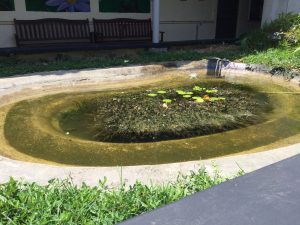

The most important and first settled, the island of Saint Helena, had been governed by the East India Company since 1659. The Kingdom of England became part of the new Kingdom of Great Britain in 1707 and then the United Kingdom in 1801 the British Empire grew into a global great power. The fort was renamed James Fort and the town Jamestown, in honour of the Duke of York and heir apparent, later King James II of England. After the Restoration of the English monarchy in 1660, the East India Company received a Royal Charter giving it the sole right to fortify and colonise the island. A fort was completed and a number of houses were built. The first governor, Captain John Dutton, arrived in 1659, and it is from this date that St Helena claims to be Britain’s second oldest (remaining) colony (after Bermuda). In 1657 the English East India Company was granted a charter to govern Saint Helena by Oliver Cromwell, and the following year the Company decided to fortify and colonise the island with planters. English and British colonisationĪ View of the Town and Island of St Helena in the Atlantic Ocean belonging to the English East India Company (engraving c. In developing their Far East trade, the Dutch also began to frequent the island and made a formal claim to it in 1633, but did not settle the isle and by 1651 largely abandoned it in favour of their colony at the Cape of Good Hope. Further visits by other English explorers followed, and, once St Helena's location was more widely known, English warships began to lie in wait in the area to attack Portuguese carracks on their way home from India. Englishman Sir Francis Drake very probably located the island on the final lap of his circumnavigation of the world (1577–1580).


Though they formed no permanent settlement, the island became crucially important for the collection of food and as a rendezvous point for homebound voyages from Asia. They imported livestock, fruit trees and vegetables, and built a chapel and one or two houses. The Portuguese found Saint Helena uninhabited, with an abundance of trees and freshwater. Of volcanic origin, the islands of Saint Helena, Ascension Island, and Tristan da Cunha were all formerly separate colonies of the English crown, though separately discovered by several Portuguese explorers between 15. The island of St Helena is then further divided into eight districts. The Governor of the territory presides over the Saint Helena Legislative Council, while he or she is represented by an Administrator on Ascension Island and an Administrator on Tristan da Cunha that preside over these two areas' Island Councils. 2.3 World War II and subsequent military presenceĪdministratively, the territory is divided into the same three parts as the territory's geography, namely Saint Helena, Ascension and Tristan da Cunha.


 0 kommentar(er)
0 kommentar(er)
